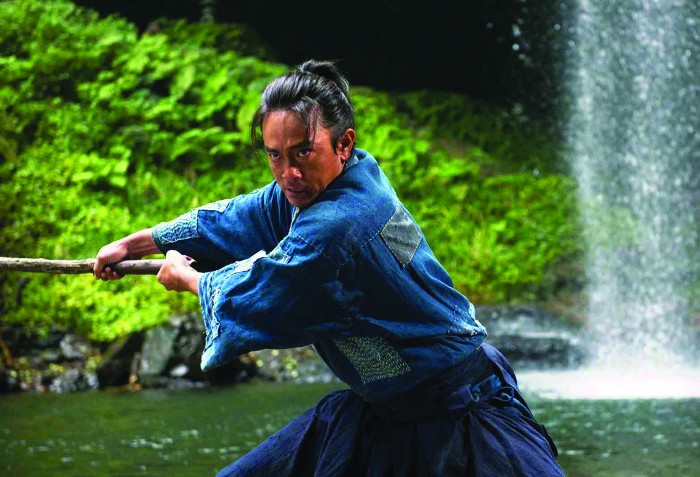
Yoshinori Nishikori has established himself as a talented writer-director with a focus on Japanese history and tradition. Tatara is his ninth directorial feature (seven of which he has written) and his previous one, Konshin (2013) highlighted Sumo and the traditions around it. In Tatara, the attention is on Japan’s handcrafted steel-making process, and village life during the Sengoku, or Warring States, period (1467–approx. 1603). The period was typified by powerful clans battling, tumultuous change and uncertainty. All these elements are present in the plot, which is set in Nishikori’s home prefecture of Shimane, in the storied area historically called Izumo.
The first half of the story follows Gosuke (Sho Aoyagi), in line to become a Murage (master blacksmith) and leader of the town’s steelmaking, like his father and grandfather before him. But Gosuke has other plans. He dreams of becoming a samurai and when a middle-aged, and apparently wise, merchant called Sobei (Takashi Sasano) comes to his village, he jumps on the opportunity, exchanging future steel for passage to Oda Nobunaga’s camp. But the life of a trainee is hard and when Oda’s men are massacred in battle, Gosuke has no choice but to tuck his tail between his legs and return home.
Yet the plot thickens. Back in the village life seems more uncertain than before. Sobei insists that samurai will come and conquer them for the steel, so he pushes muskets on the villagers as a means of defense. Gosuke’s childhood friend, Shinpei (Naoki Kobayashi), believes that Sobei is trying to take over the hamlet and gets thrown out by the flock, who are enamored with the rifles. When the lord of the district Shinnosuke (Akira) gets caught up in the violence, the village must decide who is really protecting its best interests.
Tatara Samurai is a rare jidaigeki (period piece), in that both the characters and the story take something of a backseat to the description of the period, the poetic atmosphere and the attention to historical detail. In both the first reel and the last, the steelmaking process is depicted with intricate care. Gosuke fades somewhat into the background in the second half, where protecting the village becomes paramount (and an homage to Kurosawa’s Seven Samurai takes shape). The intricate alliances and implied relationships of the second half may lose some viewers, but the rich portrayal and all-encompassing world should carry most along till the end.
(120 min.)





